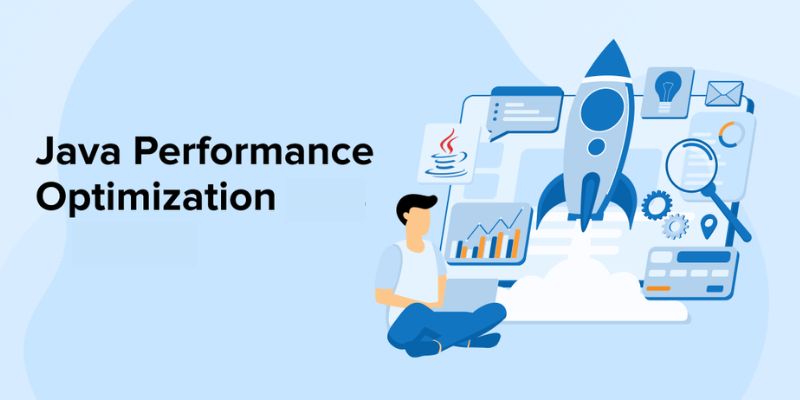Blog
How to Optimize Java Applications for Performance?
- September 12, 2024
- Posted by: aviation
- Category: Education

In today’s fast-paced digital world, application performance is a critical factor for delivering a seamless user experience. Java, known for its versatility and widespread use, powers a vast array of applications across industries. However, optimizing Java applications for performance is essential to ensure they run efficiently, especially in resource-constrained environments. This blog explores effective techniques to optimize Java applications, from improving memory management to leveraging best practices for coding.
Ways to Optimize Java Applications for Performance
Understanding Performance Bottlenecks
Before diving into optimization, it’s essential to identify what is slowing down your Java application. Performance bottlenecks can arise from several sources, including inefficient algorithms, improper use of data structures, or hardware limitations. To start, monitor the application using profiling tools like Java Flight Recorder or VisualVM, which provide insights into CPU usage, memory allocation, and thread behavior. These tools help pinpoint areas where performance is lacking, allowing developers to focus on specific optimizations rather than making unnecessary changes. For developers looking to deepen their understanding of these tools and techniques, enrolling in a Java Course in Chennai can be highly beneficial, offering hands-on training and expert guidance.
Optimize Memory Management
Java relies heavily on automatic memory management, particularly through its garbage collection (GC) mechanism. However, improper memory management can significantly degrade performance, causing long pauses due to frequent garbage collection. Here’s how to optimize memory management:
- Choose the Right Garbage Collector: Java offers multiple GC algorithms, such as Serial, Parallel, CMS (Concurrent Mark-Sweep), and G1 (Garbage-First). Choosing the appropriate garbage collector depends on your application’s requirements. For instance, G1 is ideal for applications with large heaps and can manage high throughput while maintaining low-latency.
- Minimize Object Creation: Excessive object creation can lead to frequent GC cycles, which impacts performance. By reusing objects or using primitive data types instead of wrapper classes (like int instead of Integer), you can reduce the load on the GC.
- Optimize Heap Size: Properly tuning the heap size ensures that the application doesn’t run out of memory or spend too much time in garbage collection. You can adjust the maximum (-Xmx) and minimum (-Xms) heap size settings to match the application’s memory needs.
A Software Testing Course in Chennai delivers practical training and expert guidance, enabling learners to master essential testing tools and techniques for ensuring high software quality.
Efficient Use of Data Structures
Choosing the right data structures in Java can greatly improve performance. Misusing data structures like lists, maps, or sets can lead to slower execution time and increased memory consumption. Here are some best practices:
- Choose the Right Collection Type: Use an appropriate collection type based on your requirements. For instance, use ArrayList for fast random access and LinkedList for frequent insertions and deletions. Similarly, prefer HashMap for fast lookups over TreeMap unless you specifically need sorted keys.
- Avoid Unnecessary Synchronization: In multi-threaded applications, using synchronized collections like Vector or Hashtable can degrade performance. Instead, use non-synchronized alternatives like ArrayList and HashMap if thread-safety is not a concern. If synchronization is needed, consider using ConcurrentHashMap or CopyOnWriteArrayList for better performance.
- Use StringBuilder for String Concatenation: Strings in Java are immutable, meaning every time a string is modified, a new object is created. For operations involving multiple string concatenations, use StringBuilder or StringBuffer to avoid creating numerous temporary objects.
Optimize Database Interactions
Java applications often rely on databases for storing and retrieving data. Poorly designed database interactions can severely impact performance. Here’s how to optimize them:
- Batch Processing: Instead of executing multiple individual queries, use batch processing to send several operations to the database at once. This reduces the number of database round-trips, improving overall efficiency.
- Connection Pooling: Opening and closing database connections is a costly operation. Using a connection pool (such as HikariCP or Apache DBCP) allows the application to reuse existing connections, reducing overhead and improving performance.
- Minimize Data Fetching: Fetch only the required data from the database instead of retrieving unnecessary information. This reduces memory consumption and processing time. Use pagination when dealing with large result sets to avoid loading all records into memory at once.
- Use Prepared Statements: Prepared statements not only prevent SQL injection attacks but also improve performance by reusing execution plans. This is particularly beneficial when executing similar queries multiple times.
Looking to deepen their understanding of these tools and techniques, enrolling in a Java Online Course can be highly beneficial, offering hands-on training and expert guidance.
Leverage Multithreading and Concurrency
Java provides excellent support for multithreading and concurrency through the java.util.concurrent package. Properly using multithreading can significantly enhance application performance by utilizing multiple CPU cores.
- Use Thread Pools: Instead of creating new threads for each task, use thread pools (e.g., Executors.newFixedThreadPool()). Thread pools manage a fixed number of threads, decrease the overhead of thread creation and destruction.
- Minimize Thread Contention: Avoid excessive locking and synchronization in multi-threaded applications, as these can lead to thread contention and degrade performance. Use lock-free data structures like AtomicInteger or ConcurrentHashMap to reduce the need for synchronization.
- Asynchronous Programming: For I/O-bound tasks, such as file or network operations, consider using asynchronous programming models like CompletableFuture or libraries like RxJava to prevent blocking the main thread, improving overall responsiveness.
Optimize Code Execution
Writing efficient code plays a crucial role in optimizing Java applications. Here are some tips:
- Avoid Unnecessary Object Finalization: Using finalize() is discouraged because it adds a significant performance overhead. Instead, use try-with-resources or manually close resources to avoid memory leaks.
- Use Lazy Initialization: Delay object creation until it’s absolutely necessary. Lazy initialization ensures that objects are created only when needed, reducing memory usage and improving startup time.
- Profile and Refactor Hotspots: Use profiling tools like JProfiler or YourKit to identify parts of your code that consume the most CPU or memory. Once identified, refactor these hotspots by optimizing algorithms or using more efficient data structures.
For those seeking to enhance their knowledge of testing tools and techniques, enrolling in a Software Testing Online Course offers valuable hands-on experience and expert instruction, making it a highly beneficial choice.
Reduce I/O Operations
Input/output (I/O) operations, whether on files or networks, can significantly slow down Java applications. To optimize I/O performance:
- Buffer I/O Operations: Use buffering for file and network I/O. Classes like BufferedInputStream or BufferedReader minimize the number of read/write operations, speeding up processing.
- NIO Package: The Java New I/O (NIO) package provides more efficient ways to handle I/O than traditional I/O classes. For example, using channels and buffers for file and network operations can result in better performance.
Optimizing Java applications for performance is a multi-faceted process involving memory management, efficient coding practices, database optimization, and the effective use of multithreading. By understanding the key bottlenecks in your application and applying these optimization techniques, you can significantly improve performance and scalability. Regular profiling and monitoring are crucial to ensuring your Java application continues to perform well under varying workloads. For those looking to master these skills, an IT Training Institute in Chennai can provide comprehensive training on Java optimization techniques.
